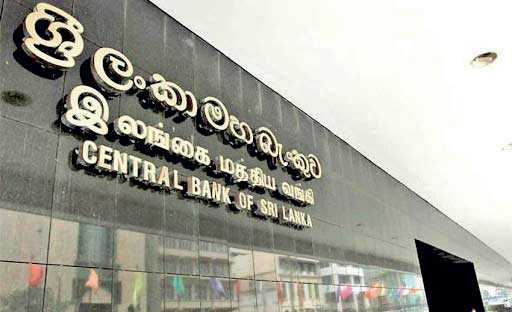Friday Sep 26, 2025
Friday Sep 26, 2025
Tuesday, 31 March 2020 00:51 - - {{hitsCtrl.values.hits}}
The Central Bank of Sri Lanka (CBSL) yesterday via a statement issued a clarification in relation to the article published in the Daily FT on Monday titled the ‘Fate of the rupee: Culprit is untamed inflation and budget deficits, not COVID-19’ by W.A. Wijewardena, a former Deputy Governor of Central Bank. The statement is as follows:
CBSL categorically denies that CBSL was involved in sale of gold in meeting the foreign debt service obligations. CBSL, being the apex financial institution, it would be obligatory to provide the real facts to the general public that may have been tainted by the impudent allegations levelled against reserve management strategies of CBSL, and hence the following explanation is provided by the CBSL. 
CBSL has changed its reserve management strategy in 2016 to a model based scientific structure known as the Strategic Assets Allocation (SAA) which has been practiced by global central banks for many years. According to this model, the reserves are objectively divided into different tranches and asset classes with a view to derive an optimal asset allocation to CBSL.
Accordingly, the CBSL’s longstanding gold holding of 15 to 20% over the last decade had proven to be an over-allocation. The most detrimental factor in over allocation is that gold happens to be a non-income bearing asset for a substantially longer period as the demand for safe haven assets like gold had deteriorated with the recovery of the global financial crisis.
In consideration of all the above-stated factors, CBSL analysed the international practices of holding gold as a reserve asset in central banks in the region and the rest of the world.
Upon a thorough analysis on the international best practices and the nature of gold as a reserve asset, the management of CBSL decided to reduce the gold holding to 3 to 5% of the foreign reserves once the gold prices have escalated to appropriate levels with a continuous monitoring in the market.
Whilst CBSL was considering to reduce its gold holding at appropriate prices, gold prices which were continuously trading at $ 1,300-$ 1,400 levels started to escalate since mid-2019 owing to the reversal of the monetary policy stance of US Federal Reserve Bank and the geopolitical tensions that erupted in Middle East.
CBSL has also disposed smaller portions of its gold holdings during above period of time. However, with the outbreak of corona (COVID-19) virus in China during the months of January and February 2020, an abrupt movement was shown in the gold prices recording an eight year high. At this juncture, CBSL disposed a portion of excess holding above the prudent level in order to bring down the gold holdings to an acceptable percentage of the reserves.
It is also pertinent to note that, CBSL sold excess holding of gold above the average cost of purchase, realising a profit to the CBSL. Timing of this disposal was opportune, as subsequent to the disposal, gold prices have moved abruptly with the increased volatility in the market.
Similarly, across the globe, reserve managers unwound their gold positions with this abrupt movement in gold price, which was a market opportunity.
Accordingly, CBSL categorically denies the erroneous interpretation that CBSL has disposed the gold as an act of desperation in order to finance the loan repayments falling due. It is important to note that the decision to reduce gold holding was executed with a long-term objective of converting a non-income bearing asset to an income bearing asset in line with the modern reserve management trends.
In that context, gold disposal proceeds had been invested in different asset classes in the foreign reserves and have not utilised to pay any government debt servicing purposes or for any other purposes.